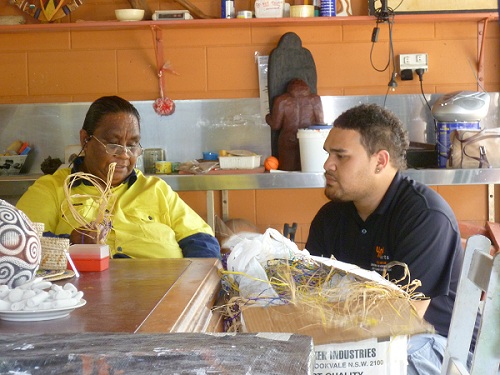Albert Namatjira – copyright and a will


Albert Namatjira is one of Australia’s most well-known and celebrated Indigenous artists, however his family’s ability to have any legal influence over the ongoing cultural and economic management of his artworks after his death was compromised by the Public Trustee’s failure to appreciate the value and significance of copyright.
In 1957 Namatjira had entered into a legal agreement with publishing company Legend Press, which was owned by John Brackenberg. This agreement stated that Legend Press would pay royalties to Namatjira in exchange for having the sole right to reproduce all of his paintings. This was not an agreement about buying paintings rather it was a licence of Namatjira’s copyright – the right to put reproductions of his artwork on things such as greeting cards and tea towels and in books. In return for this licence, Namatjira received an ongoing economic benefit through royalties or licence fees. However he still owned his copyright and, in theory, at the end of that licence he could have negotiated a different agreement or sought better fees. Indeed, as the value of his works increased and his reputation grew, it would have made sense to seek improved terms for any copyright licence.
However, two years later, in 1959, Namatijira passed away. His will left his estate including his copyright to his family. At this time Legend Press still owned the rights to reproduce Namatjira’s work, but continued to pay a 12 percent royalty to his family each year. The Public Trustee for the Northern Territory Government was responsible for administering the will and his estate. When the agreement concluded in 1983, the Public Trustee decided to sell the copyright to all his works for $8,500 to John Brackenberg.
Under current law, copyright endures for 70 years after an artist’s death. It is likely that the copyright fees which could have been earned by the family from licences of Namitjira’s work over the next 46 years would have been far in excess of $8,500! Since his death Namatjira’s works have rocketed up in price, selling for up to several hundred thousand dollars today and hence the fees for using his copyright would also have increased dramatically. Sadly, the Public Trustee did not think about that or consult Namatjira’s family after their decision. The Public Trustee did not understand that keeping the copyright would have created financial benefits for the family far greater than the $8500 sale price.
It’s important to understand that copyright can be a very valuable asset and can become even more valuable over time. It’s important that artists don’t give their copyright away during their lifetime and that those responsible for administering their wills and estates understand the potential value that copyright can have.
The story of Albert Namatjira demonstrates that there is much more to be done to adequately protect the legacy of Indigenous artists in Australia.
One way for Indigenous artists to safeguard the copyright in their artworks for their families is to make sure they have a will. Arts Law has a template will for Indigenous artists available on its Artists in the Black website. This will has been specifically designed to facilitate the management of an artists’ copyright after their death, to help ensure the intended individuals become beneficiaries of the artwork and associated economic benefits.




